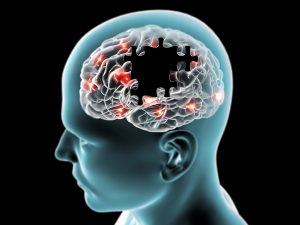What is Parkinson’s Disease?

Parkinson’s Disease is a brain disorder that causes individuals to have difficulty with balance, coordination and walking. They can also become shaky or stiff and some people even develop tremors. It is a common disease that can be controlled with prescribed medications and physical activity. There is no perfect exercise prescription for individuals with Parkinson’s, all exercises can be modified to fit the intensity of each person’s stage of the disease.
Stages of Parkinson’s Disease
There are 5 stages to Parkinson’s Disease, each with different symptoms and intensities.
- Stage 1: Mild symptoms that affect mainly one side of the body. The symptoms can be worked through and individuals daily living may not be affected.
- Stage 2: Symptoms will not be affecting both sides of the body and it may become more difficult to continue activities of daily living.
- Stage 3: Loss of balance occurs during this stage and individuals may need help with daily activities.
- Stage 4: Movement is difficult in this stage and will need help doing their daily activities.
- Stage 5: Patients may need a wheelchair because standing and walking has become so difficult
Benefits of Weight Training with Parkinson’s Disease
Weight training allows individuals to gain muscle strength and decrease fat. People with Parkinson’s Disease begin to lose their strength and it becomes difficult for them to continue with activities of daily living (ADLs). Individuals can start with body-weight exercises and increase in weight as they please. It’s important to start with body weight to understand how the exercise should be done and to not put a strain on the individual.
Body weight exercises that an individual can utilize include:
- Seated Leg Extensions with Body Weight
- Sit to Stand
- Wall Push-Ups or regular push-ups
- Sitting in a chair and using legs to pull chair forward, or push chair back.
These exercises can be modified for individuals specific needs and can be used with body weight, resistance bands, or weights.
Flexibility Training
Parkinson’s causes the individuals with this disease to lose full joint range of motion. Decreasing their ranges of motion make it harder for them to weight train and do basic skills. It is necessary for these individuals to stretch and keep their mobility.
The muscles that begin to tighten and should be focused on the most are:
- Lower Back
- Hamstrings and Knees
- Shoulders and Elbows
- Chest wall
- Calves
- Wrists
 The stretches can be done seated, standing, or lying down. They should also be done until there is a pull but not pain. Pain can cause the individual to become sore and not want to continue working out or stretching.
The stretches can be done seated, standing, or lying down. They should also be done until there is a pull but not pain. Pain can cause the individual to become sore and not want to continue working out or stretching.
Aerobic Training and Parkinson’s Disease
Walking with Parkinson’s Disease can be difficult for many individuals. As the disease progresses balance and coordination begin to decrease and it causes people to become more sedentary because they are afraid of falling and becoming injured. Aerobic training is the most beneficial for this population. Depending on the severity of their disease and their balance they can utilize their walkers/canes if necessary. Also if they have joint pain or any type of pain the individuals can do aquatic aerobic exercises because it is gentle on the body and joints. Stationary bikes can also be used if the person doesn’t have pain in their knees, hamstrings and calves.
Laurie Urbanski is a senior at Rowan University, studying Health and Exercise Sciences. She is currently an intern with the Stress Management Institute. In her free time, she is a cheerleading coach and enjoys spending her time in the gym and with her family and friends.
References:
https://www.sciencedaily.com/releases/2014/01/140124161203.htm
https://parkinson.org/Understanding-Parkinsons/Treatment/Exercise
https://www.parkinson.org/sites/default/files/Fitness_Counts.pdf
https://parkinsonsnewstoday.com/2017/08/23/five-stages-of-parkinsons-disease/
